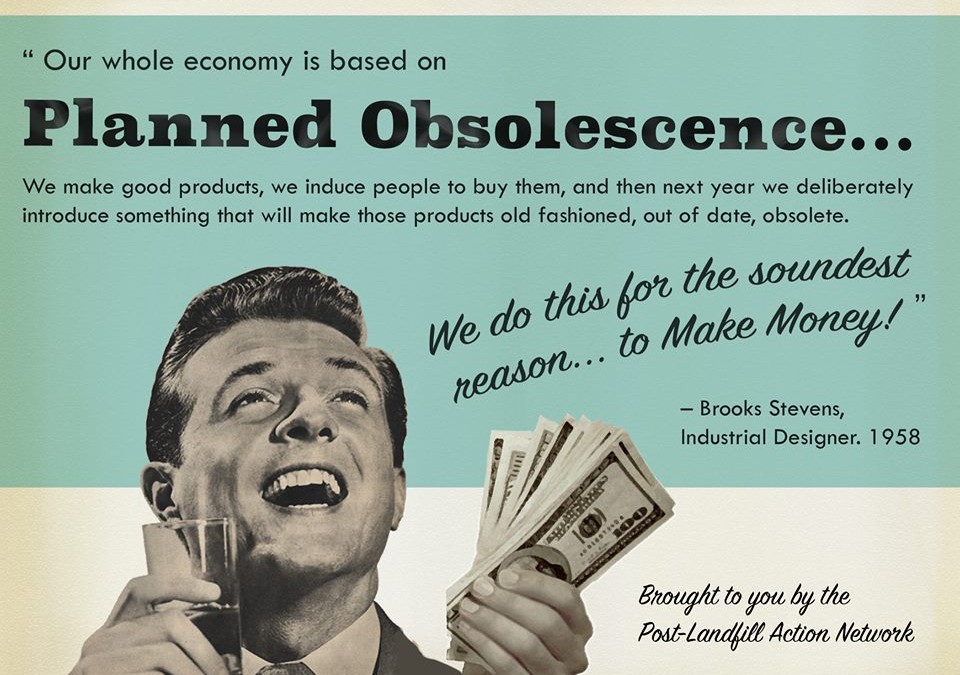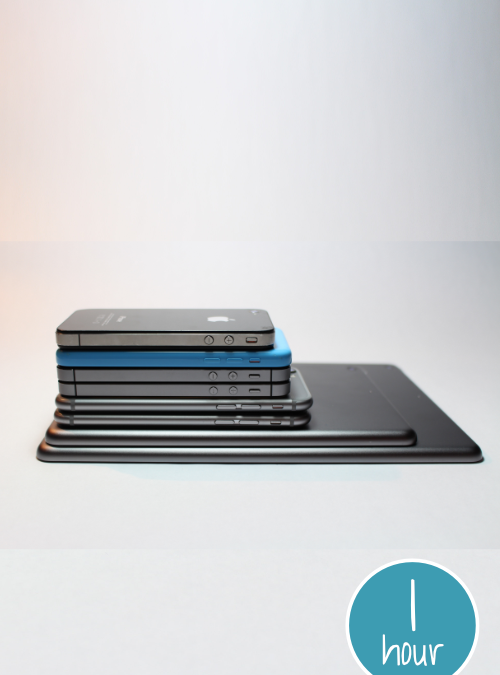
Photo credit: Gabriel Freytez on Pexels
Your mission
Raise awareness on what planned obsolescence is and what to do about it.
Time Commitment: 1 Hour
Range of Impact: Community
Why this Action is impactful
This subtle business strategy is the culprit of a lot of avoidable waste and production of more unnecessary plastic.
What to know before getting started
Planned obsolescence is an economic and design decision where companies artificially limit how long their products last or remain desirable – increasing consumption and creating unnecessary waste.
There are a two ways companies make their products obsolete:
- Planned obsolescence: A company intentionally designs a product so that it breaks, wears out, can’t be repaired, or becomes incompatible earlier than it naturally would. Example 1: A cell phone company creates a phone with a new charging port that doesn’t work with old cable models. Example 2: A kitchen appliance is made with a cheap plastic on/off switch that breaks easily and and does not provide replacement parts.
- Perceived obsolescence: A company repeatedly changes the style of the new product, making the old style undesirable. Example: A clothing company releases a new look many times a year, encouraging consumers to replace their clothing, even if it’s still functional.

What to do
- Watch this video explaining planned and perceived obsolescence.
- Find an item in your home or classroom that you think might be or has already been made obsolete by planned or perceived obsolescence .
- Take a picture of the item. If you have the new item replacing the “old” one, take a picture of that too.
- Tell someone you know about planned obsolescence and how to identify it, or post a picture of the item you identified on your social media account with a description of what planned obsolescence is and how to identify it.
Tips and Suggestions
Here are some tips and suggestions for identifying and countering planned and perceived obsolescence:
- It can be tricky to identify planned obsolescence. Sometimes we’re so used to it, that we don’t even see it as a problem. See if you can question your assumptions about what it means to shop, how things are marketed to you, and how to know the difference between “need a new one” and “want a new one”.
- Be aware that quality items are more expensive upfront, but they can last much longer. Low quality items are generally cheaper, but it’s likely they won’t last as long, and so in the long term you’ll likely spend more money replacing the item. This is often an issue associated with inequity. For example a blue-collar day labor might not be able to afford the upfront expense for a pair of steel-toed boots that would last a long time, so they are stuck buying the inexpensive pair. But in the long run they end up spending more money, simply because they can’t afford the initial upfront cost of the long-lasting quality pair.
- Look for items with a lifetime warranty, get them cheaper and create less waste by buying them second-hand.
- When you are buying something new, analyze the product for signs of planned obsolescence, using the questions below.
- Am I buying this just to stay up with the current trend?
- Are there parts of this item that look like they’ll break really easily?
- Is this product repairable? Does the company sell replacement parts or offer a repair program?
- Is this product compatible with the rest of my system (mostly applicable to tech)?
Track your contribution
To submit your work and get recognized for your contribution to your community, complete the form below. If we approve your submission, you’ll be awarded 1 Hour.
Learn more
Check out the educational videos below to learn more about this topic.
Do another Action
Check out our other Actions that build off of this one!
Get Creative With Artivism
Raise awareness of plastic pollution by recording a song or creating a video.
Get Vocal on Social
Share your experience at city council on social media and get your friends involved in civics too.
Systems Thinker Pathway Badge
This Action is part of the Systems Thinker Pathway Badge. Complete the Pathway to earn the Badge!




